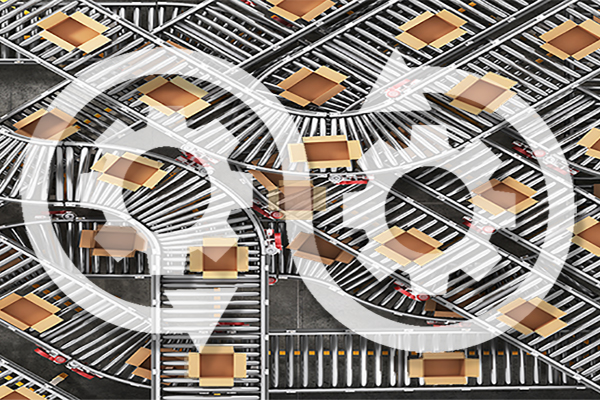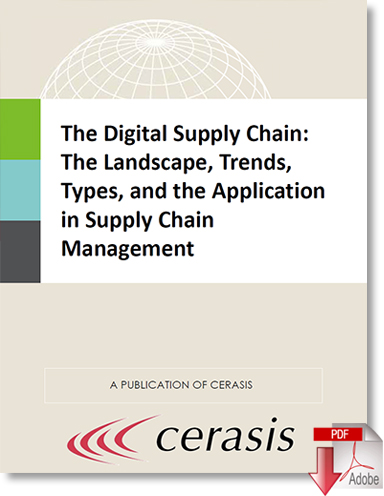How to Write a Standardized Supply Chain Management Plan

Whether your business is a small firm that operates in a localized area or a large company with international shipping, a standardized supply chain management plan can indeed be of great help.
The Essence of Business Infrastructure
Whether you operate in a brick-and-mortar business model or frequently collaborate with international companies, supply management can effectively make or break your company.
Having a stable influx of goods to distribute or refine into higher quality goods lies in the essence of any business’ infrastructure.
According to Learn G2, 79% of companies with organized supply chain management perform better and achieve higher revenue growth within their industries while 30% of supply management leaders highlighted the need to respond to client queries quickly and precisely as a top business priority.
In light of these statistics, it makes sense then that a well-defined supply chain management plan can elevate the way you deliver goods and services to your end-customers.
However, standardizing such an important document isn’t easy without a clear outline of how to do so – which is what we will take a look at today.
The Advantages of Supply Chain Management Standardization
Before we get into how you can write a supply chain management plan for your company, it’s worth pointing out why such a step can be beneficial for your business.
As we’ve mentioned previously, supply management is a must for businesses with a high turnaround of goods and services.
No matter what, you do not want to find yourself in a situation with no supply of materials or goods for further sales and shipping.
Even though a supply management document isn’t difficult to write and format on your own, it’s important to have such a template available for quick orders and streamlined workflow, especially if you work with multiple suppliers on an international level.
As such, utilizing writing platforms such as Writing Judge and Evernote to create a standardized supply chain management plan which can be retrofitted depending on your current needs is essential in today’s day and age, leading to advantages such as:
- Higher revenue generation and return on the initial investment
- Higher networking and collaboration potential for your business
- Improved overall productivity and turnaround of your company
- Drastic drops in errors and shipping delays
Audit Your Company
The first step in standardizing your supply management and creating a procurement document for further use is to audit your current company standards.
Do you already have some form of supply management system or software in place? How many stakeholders do you cooperate with, how frequently and on what level (local/international)?
Make sure to consult your department leads and procurement agents internally before you start writing an official template for company-wide use.
Knowing the current state of your supply pipeline will give you a good indication of what type of supply chain management plan will be best suited for your business.
Outline the Procurement Standards in Your Supply Chain Management Plan
Procurement standards vary from company to company and yours is no exception. Any business you want to procure goods from will likely want to know about your infrastructure and whether or not you are capable of storing the goods they will ship to you.
Elements such as warehouse capacity, storage facilities for goods with special requirements (cold storage for example) as well as the types of transportation you have available should find their way into this segment.
A clear outline of your procurement standards will allow any third-party supplier to quickly assess how viable your storage facilities and inventory management capacities are for their goods, leading to better odds at fruitful cooperation between your companies.
Assess Your Quality Assurance Requirements
Whether you require supply chain management for your internal use or further shipping in your local area, you should always have a dedicated Quality Assurance (QA) team on standby. Your QA regulations should be the next part of your supply chain management plan as they will inform the reader of your procurement standards.
While QA may not seem like an important addition to a supply chain management plan, it’s important to note that different goods and raw materials may become contaminated and lose their initial quality with improper shipping and handling.
Writing tools such as Trust My Paper and Hemingway can be used to clearly and concisely outline your QA requirements, ensuring that each supplier is fully aware of what processes their goods will go through before they are considered satisfactory by your team.
Governmental Laws and Regulations
Depending on the industry you operate in, different governmental regulations and international shipping laws will apply to you. These should find their way into the supply chain management plan for the sake of transparency and build trust with potential suppliers early on.
After all, procuring goods and materials without outlining laws and regulations can cost you not only time and resources but also your reputation in the industry. Make sure to translate this section of the supply management document for any suppliers which may be unfamiliar with your native language to ensure that the writing is clear to anyone who might read it.
Develop your Supply Requisition
Once you’ve outlined all of the regulations, QA standards and government laws which apply to your industry, you can proceed to the list of goods and materials for procurement. This section can be written as an empty table that can be filled in with different names and quantities depending on who you contact and with what intent.
Contact information in the form of phone and email address should be in this section of the document which will allow the reader to quickly get in touch with you for clarification of any of the items on the list if need be. A special request table should also be available below the procurement list for any comments or tips you may have for the supplier before they decide on whether or not your supply plan is viable for their consideration.
Detail the Delivery Timeline
Following the breakdown of goods and the quantities that you want to procure, you should conclude the document with an outline of your preferred delivery timetable. The timeline of your procurement will be one of the decisive factors in ensuring that you get the supply of goods you need in a timely fashion.
Do you require all of the goods at once or are some of them of higher priority than others? Is the entire shipping process on the supplier’s hands or do you want to handle it with your own transportation? Use your best judgment and provide the supplier with as much information about your optimal delivery timeline and leave some room for improvisation and changes just in case.
Conclusion: The Future in Supply Chain Management’s Standardization
In the world of fast supply turnover and increased demand for shipping standardization, outlining your supply management documents will drastically improve your performance on the market going forward.
Whether your business is a small firm that operates in a localized area or a large company with international shipping, a standardized supply chain management plan can indeed be of great help to your employees.
Once the template is outlined, you will have a much easier time procuring goods in the future due to it becoming a simple process of filling out the blanks and sending it out to your suppliers.
Related Article: Top Six Supply Chain Technology Trends for 2020
Related White Paper
Digital Supply Chain: The Landscape, Trends, Types, and the Application in Supply Chain Management
In this e-book, you will learn what is the digital supply chain, what is the state of the digital supply chain, and what are the trends and technologies, as well as the application for a more effective supply chain management process. Download Now!
More Cerasis Resources
Article Topics
Cerasis News & Resources
GlobalTranz Appoints Executive Chairman Bob Farrell as Chief Executive Officer Amazon’s Drone Delivery Hits Milestone with Federal Aviation Administration Clearance Digital Supply Chain: The Landscape, Trends, Types, and the Application in Supply Chain Management Walmart’s Bid for TikTok Could Benefit the Retail Giant’s Ecommerce and Advertising Businesses The State of Ecommerce Logistics Heading into 2020 Peak Delivery Season Bringing Omnichannel to the Forefront of Ecommerce FedEx’s Fred Smith Optimistic About Economic Recovery as Ecommerce Business Booms More CerasisLatest in Supply Chain
TIm Cook Says Apple Plans to Increase Investments in Vietnam Amazon Logistics’ Growth Shakes Up Shipping Industry in 2023 Spotlight Startup: Cart.com is Reimagining Logistics Walmart and Swisslog Expand Partnership with New Texas Facility Nissan Channels Tesla With Its Latest Manufacturing Process Taking Stock of Today’s Robotics Market and What the Future Holds U.S. Manufacturing Gains Momentum After Another Strong Month More Supply Chain
















